Baking has always been my happy place, but over the years, I’ve become more conscious about making my treats not just delicious but also healthier. One thing I actively work on is increasing fibre content in my baked goods. Fibre is essential for good digestion, helps maintain stable blood sugar levels, and keeps you full for longer. Most traditional baked goods, especially ones made with refined flour, lack fibre. But the good news is that with a few smart swaps and additions, you can easily boost the fibre content without compromising on taste or texture. Whether you’re baking for yourself, your family, or even your customers, adding fibre can turn your indulgent bakes into more nourishing treats. Here are five tried-and-tested ways to sneak more fibre into your baking.
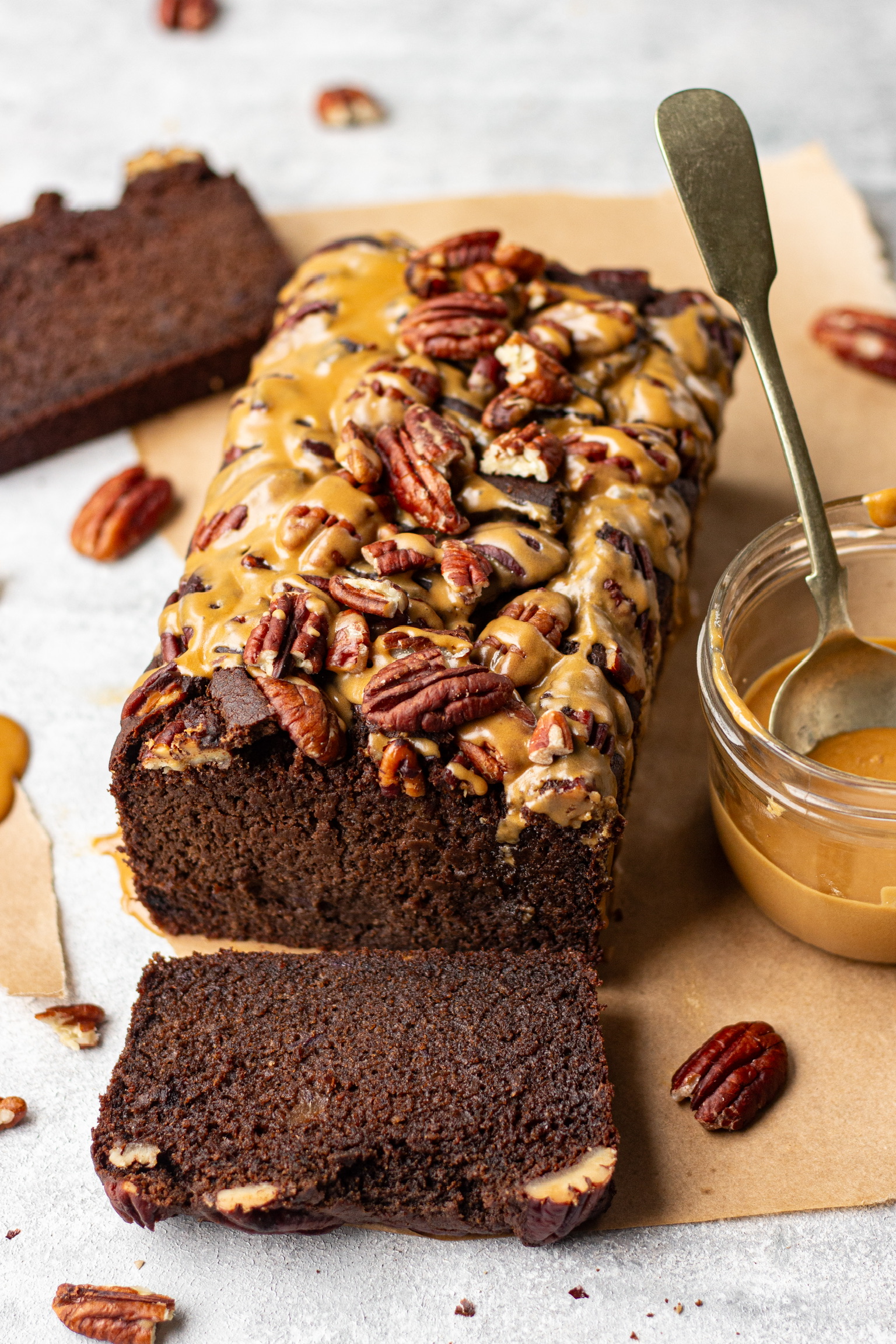
1. USE WHOLE WHEAT FLOUR OR OTHER WHOLE GRAIN FLOURS
One of the simplest and most effective ways to increase fibre is to replace part (or all) of your all-purpose flour with whole wheat flour or other high-fibre flours like ragi, oat, or jowar. Whole wheat flour contains about 12-14g of fibre per cup, compared to only 2-3g in all-purpose flour.
- Start with replacing 25% of the flour in your recipe and gradually increase.
- Whole wheat flour can make baked goods slightly denser, so pairing it with moist ingredients like yogurt, buttermilk, or fruit purees helps maintain a soft texture.
- If you want lighter results, try using white whole wheat flour, which has a milder taste and finer texture.
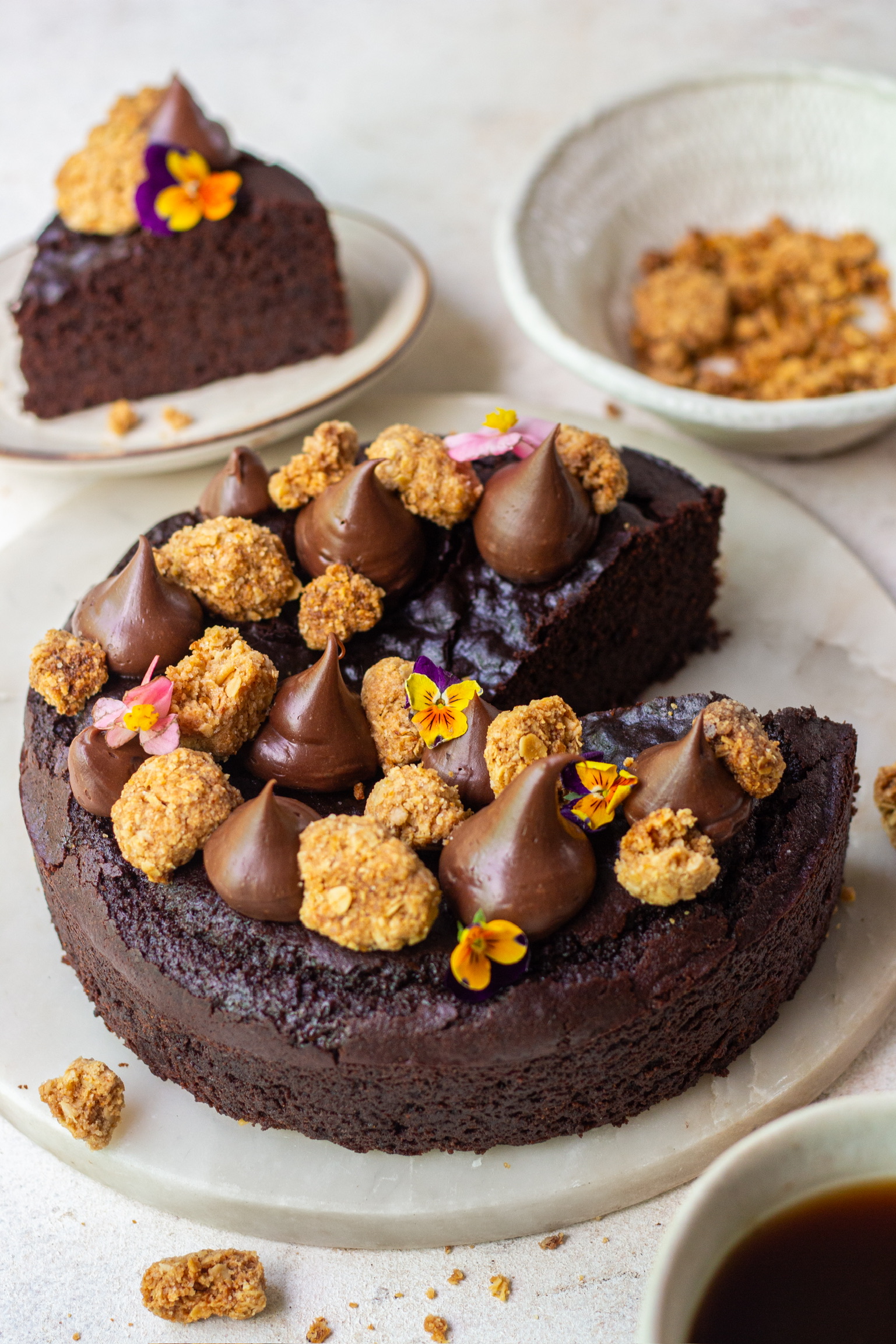
RELATED RECIPES FROM THE BLOG
EGGLESS COFFEE ATTA CAKE IN A PAN
EGGLESS WHOLEWHEAT COOKIE CUPS
RAGI CHOCOLATE CAKE IN A COOKER
GLUTEN FREE JOWAR BROWNIES
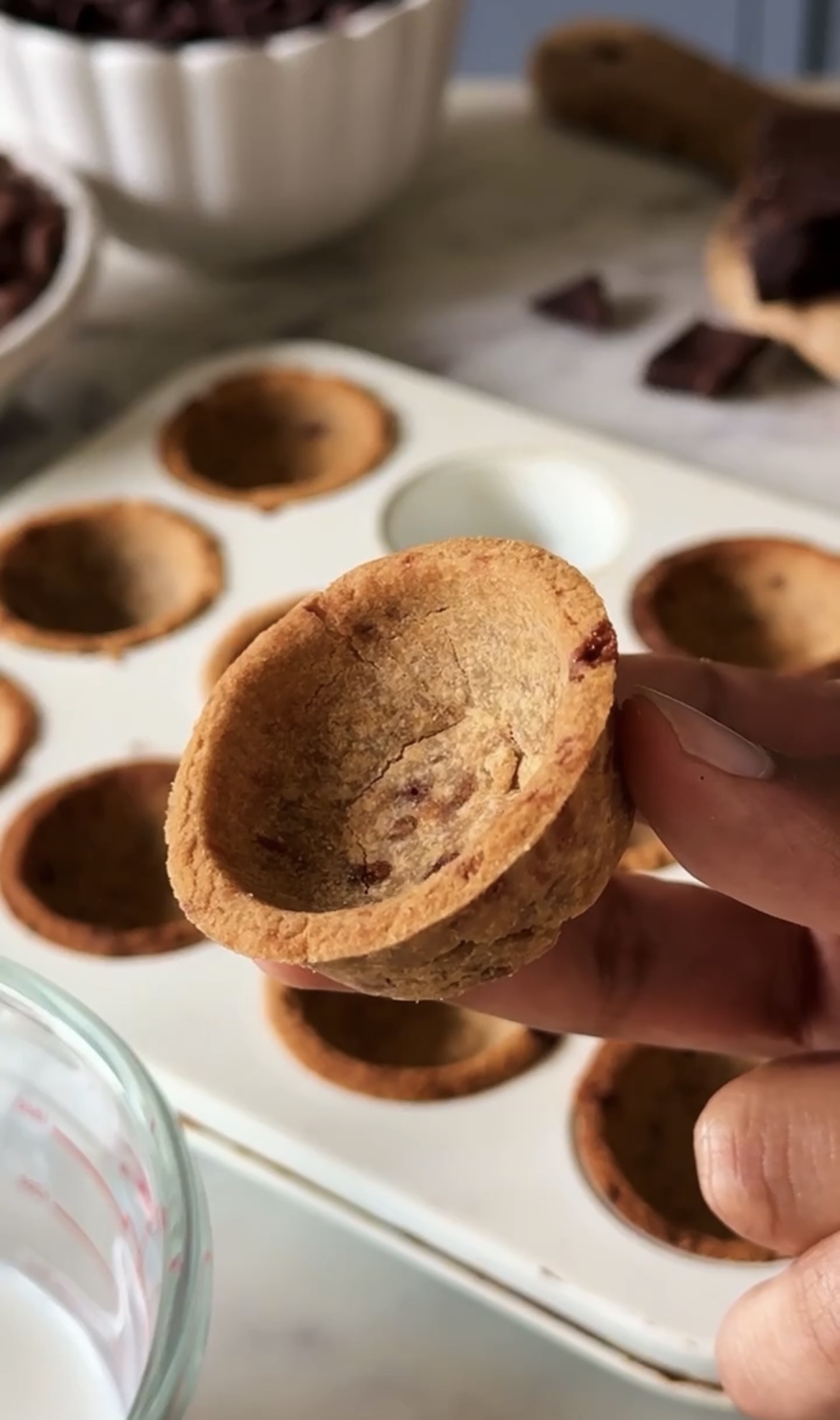
2. ADD SEEDS AND NUTS
Seeds and nuts not only add fibre but also introduce healthy fats, protein, and a lovely crunch to your bakes. Popular options include chia seeds, flaxseeds, sunflower seeds, almonds, walnuts, and pecans.
- Flaxseed meal works beautifully in muffins, breads, and cookies.
- Chia seeds can be sprinkled into batter or used as a binder in eggless recipes.
- Nut flours (like almond flour) contribute both fibre and moisture.
- For every cup of flour, add 2-3 tablespoons of ground seeds or nuts to increase fibre without altering the recipe significantly.
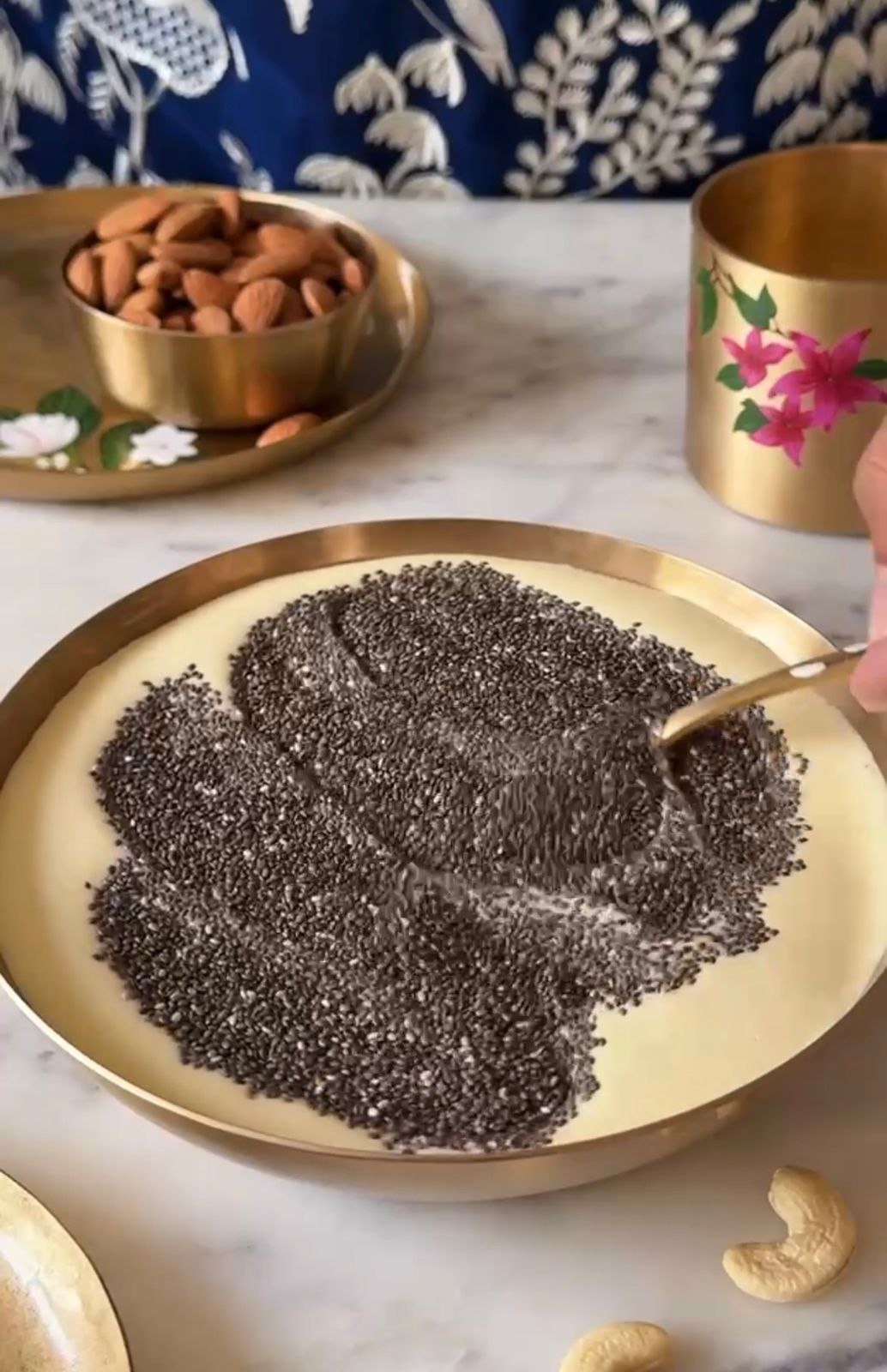
RELATED RECIPES FROM THE BLOG
HEALTHY DRY FRUIT MILK CHIA PUDDING
100% WHOLEWHEAT BREAD
EGGLESS ALMOND BISCOTTI
CHOCOLATE CHIP ALMOND COOKIES
3. INCORPORATE FRUITS AND VEGETABLES
Many fruits and vegetables are naturally rich in fibre, and they also add moisture, natural sweetness, and nutrients. Some of my personal favourites include bananas, apples, carrots and pumpkin.
- Grated carrots work well in cakes, muffins, and loaves.
- Mashed bananas or unsweetened applesauce can replace part of the fat while adding fibre.
- Dried fruits like raisins, dates, and figs also provide concentrated fibre and chewy texture.
- For maximum fibre boost, leave the skins on fruits like apples and pears.

RELATED RECIPES FROM THE BLOG
HEALTHY BANANA BREAD
APPLE CHOCOLATE MOUSSE CAKE
APPLE CRISP
WHOLEWHEAT SPICED CARROT CAKE
EGGLESS DATES BROWNIES

4. USE OATS AND BRAN
Oats and bran are fibre powerhouses that blend easily into baked goods. Oat flour can replace part of your regular flour, while rolled oats can add texture to cookies and muffins. Wheat bran offers concentrated fibre and works particularly well in hearty bakes like bran muffins or rustic breads.
- Replace up to 1/3 of your flour with oat flour.
- Add 2-3 tablespoons of wheat bran to pancakes, muffins, or cookies.
- Use rolled oats in crumble toppings, granola bars, and flapjacks.
- Don’t forget oat bran, which offers even more fibre than rolled oats.
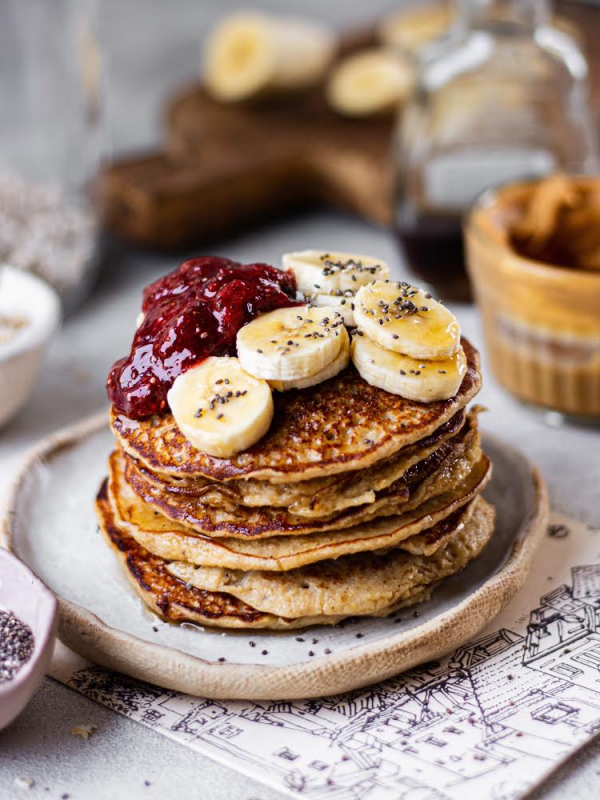
RELATED RECIPES FROM THE BLOG
5. BOOST FIBRE WITH COCONUT FLOUR OR PSYLLIUM HUSK
If you’re looking for concentrated sources of fibre that don’t require drastic recipe changes, coconut flour and psyllium husk are fantastic options. Both are naturally rich in fibre and work well in many baked goods — from cakes to cookies to breads.
- Coconut flour contains a whopping 10 grams of fibre per 2 tablespoons. Because it’s highly absorbent, you only need a small amount — typically replacing up to 20% of your regular flour. It pairs beautifully with tropical flavours like pineapple, banana, and chocolate.
- Psyllium husk is an amazing binder in gluten-free or eggless baking and offers nearly 5 grams of fibre per tablespoon. It works well in breads, muffins, and cookies, especially in combination with whole grain flours.
These fibre-rich ingredients not only boost gut-friendly fibre but also enhance texture, helping create tender and moist bakes when used correctly.
RELATED RECIPES FROM THE BLOG

FINAL THOUGHTS
Adding fibre to your baked goods doesn’t mean sacrificing flavor or indulgence. It’s all about balance and clever substitutions. By gradually incorporating whole grains, seeds, fruits, vegetables, oats, and high-fibre add-ins like coconut flour or psyllium husk into your recipes, you can create treats that are not only delicious but also beneficial for your gut health. Plus, your family and friends will probably never notice the difference!
So, the next time you pull out your mixing bowl, think fibre-first and see how effortlessly you can bake your way to better health.

 Hello. I'm Shivesh Bhatia, a food blogger and food stylist from Delhi, India. Welcome to Bake With Shivesh, where I'll help you create magic in your kitchens with my simple recipes.
Hello. I'm Shivesh Bhatia, a food blogger and food stylist from Delhi, India. Welcome to Bake With Shivesh, where I'll help you create magic in your kitchens with my simple recipes.
Leave a Reply